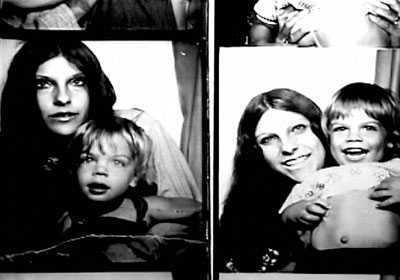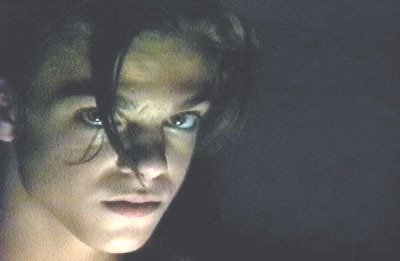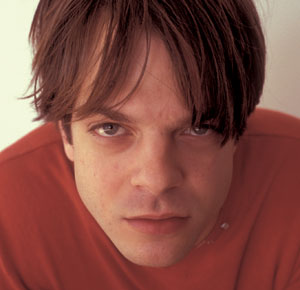I'LL BE YOUR MIRROR
Armed only with a cheap video camera, consumer editing software, troves of home movie footage and less than $300, Jonathan Caouette made Tarnation, an experimental documentary about himself and his family. Gus van Sant and Jonathan Cameron Mitchell have championed the film, and Caouette’s already received more A-list festival invites than he knows what to do with. Andy Bailey investigates.
Tarnation director Jonathan Caouette. PHOTO: HENNY GARFUNKEL.
In the competitive, publicist-fueled rat race to claim the mantle of “cheapest film ever made,” the year’s surefire winner is New York City–based filmmaker Jonathan Caouette’s experimental personal essay Tarnation, shot for $218.32 and edited entirely on Apple’s consumer-grade iMovie software. But although it screened at Sundance, has been invited to the Directors’ Fortnight at Cannes and the New York Film Festival and has attracted high-profile executive producers like Gus Van Sant and John Cameron Mitchell, the question remains: will this film ever see the broader light of day? Packed with stunning but difficult-to-clear pop music cues, the film needs clearances, possible remixing and, to make it to the Croisette, dollars for a film blowup.
|
 |
| Caouette and his mother Reée in Tarnation. |
While some have dismissed Tarnation as a glorified home movie, one that revels in its own blunt victimization, the film is not without real emotion. Perhaps it’s the rudimentary appeal of the work that makes it resonate with festivalgoers, many of whom were reduced to tears during Park City screenings.
A lot of the footage in Tarnation consists of early attempts to make home movies,” Caouette admitted in an interview prior to Sundance, where he presented the movie as a musical docudrama. “But now, objectifying it as an adult, it certainly has morphed into something else. The video camera was a way to disassociate myself from what I was going through.”
|
Caouette stopped documenting his life after a devastating change in Renée’s condition — she suffered an overdose of lithium — prompted him to shut off the camera and start the editing process. By then Caouette had relocated to Astoria, Queens, to an apartment he shares with his boyfriend and mother. “I started using iMovie because it came with my boyfriend’s computer and was simple as hell [to use],” Caouette explains. Tarnation’s press-release-friendly budget can be itemized as follows: $149.47 for Hi-8 tapes, $33.57 for VHS tapes, $10.27 for a camera adapter and $25 for a pair of angel wings employed during a musical reenactment of Blue Velvet that Caouette once staged during his high school years. (The home computer was a gift to Caouette’s boyfriend.)
 |
| Caouette in Tarnation. |
Thus far the film has only been exhibited digitally at film festivals — a 35mm print would require additional production funds. But Tarnation’s major stumbling block on its laborious path to theatrical distribution isn’t its raw, home-movie quality but clearances for the music, which includes everything from Sinatra to moody numbers by Nick Drake and Low and which are crucial to the work’s sentimental veneer.
It’s ironic that a film originally created for less than the price of a plane ticket now has to obtain thousands of dollars in music clearances in order to move forward for distribution,” bemoans producer Stephen Winter in a recent interview. “But Jonathan’s amazing choice of songs is part of what makes Tarnation so extraordinary. Our goal is to retain as much of the music as possible without breaking the bank. If Paris Is Burning can get through this process with all those rare house tracks intact, we certainly can do it.”
|
Go to the Tarnation web site at http://www.i-saw-tarnation.com/.
VOD CALENDAR


 See the VOD Calendar →
See the VOD Calendar →



